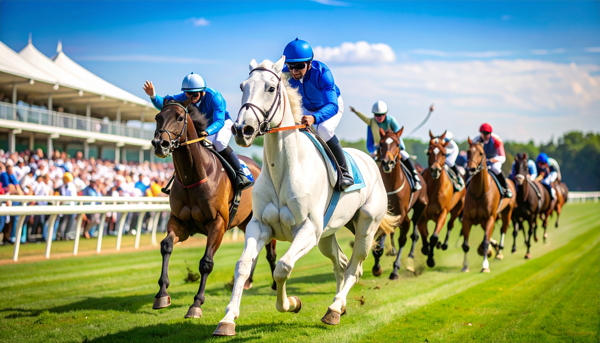 |
RacingBetter News |
| Wednesday 18th March 2025 | |
Instinct vs. Algorithm: Can Human Intuition Still Win at the Track
The more that technology enters our lives, the more prone we are to relying on its power, and there’s no greater example of this at the moment than the influence of AI. It has permeated every imaginable corner of our lives - finance, retail, education, entertainment and many more!

Even platforms from the list of all trusted UK betting sites at Legalbet.uk, a review and comparison service, use AI for odds calculations, risk management, fraud detection and fine-tuning their customers’ experiences.
AI has also penetrated areas of sport, such as deep analytics used for training. Few sports have such a strong relationship with statistics and form as horse racing does, as it has long been the foundation that guides people's decisions when betting on the sport of kings. At the end of the day, it’s still the user’s intuition as to what bets are placed, but is it a skill that is fading away in the face of technology?
The Long-Standing Form of Human Intuition
Many people would probably call intuition something like having a gut feeling, but it goes a lot deeper than that. Intuition for horse racing betting comes from the experience of being trackside on race day (or at least the equivalent of watching a lot of racing on TV and betting on it). Horse racing is an observational sport, and that is something that can’t quite be replicated if turning to AI for predictions.
Watching the behaviour of horses as they are paraded ahead of a race to see what their temperament is like, and understanding other elements like how comfortable a certain horse is likely to be on the track, how the jockey will feel the pace of a race or handle the conditions underfoot are things that can’t be measured and turned into stats.
That is just scraping the surface of intangible, observational elements that go into making horse racing selections. Building up a big foundation over the years of jockey styles, horse behaviour, track conditions and other things, strengthens the “intuition” that is felt in the current moment.
It’s creating an evaluative framework of criteria that goes well beyond the raw data of statistics, and it’s an area where that human touch wins out - a computer program, for example, just isn’t going to pick up on a jockey or a horse’s body language.
Getting the Feel
Being trackside helps immensely in getting a feel for a race, and the more often it is that races and form are observed, the greater the development of this “intuition” skill. This again is something that lies beyond the realm of statistical research for making racing selections, and is essentially putting intangible pieces of the puzzle together.
Getting the feeling about a race from observations will also directly feed into understanding successes and failures because they are a big part of that as well. Elements like the adaptability to read quantifiably unmeasurable things, such as jockey confidence and spotting a spring in the step of a horse, are important ingredients of predictions.
When complete, that intuition should augment the results of the statistical insights. Intuition is never going to completely replace the need for doing research, just as looking at the latest form isn’t going to be as strong and insightful as blending together raw data and the racegoers' instincts.
Backed by Technology
This is an important reminder to rely on human skills and not just trust technology to come up with the answers. This is especially relevant nowadays, with people turning to AI to perform tasks for them. When it comes to horse racing prediction skills, technology falls short because it can’t add objectivity and nuances into the equation, like the subtle changes in course conditions that a punter could pick up on by being trackside.
AI is fantastic for crunching the raw data and for spotting trends within the sport. Huge volumes of historical data can be thrown at machine learning, including past performances, speed figures and trainer and jockey stats. It can break down millions of racing data points and understand data a lot quicker than the human brain.
But technology can’t be solely relied upon, because it can’t understand horse racing; it can only process those data points about it.
Getting Past the Post
AI brings great analytical capabilities to the table, but that human intuition gained from being trackside is irreplaceable. Learned from being trackside, it provides a fantastically nuanced understanding of the sport, and as a tool for horse racing predictions, it simply remains invaluable.







